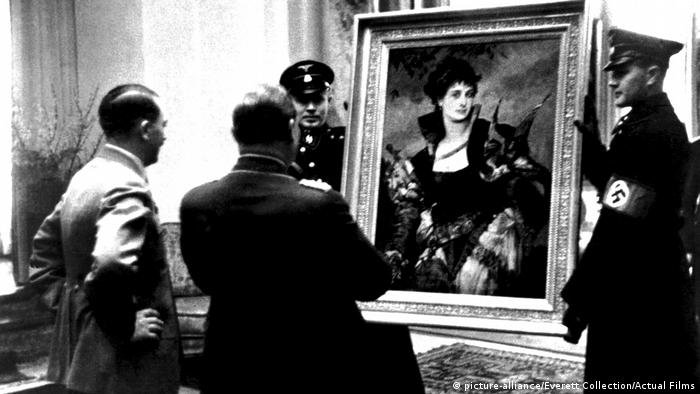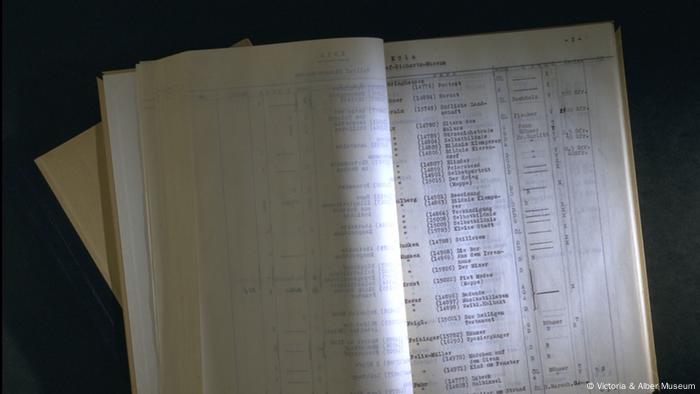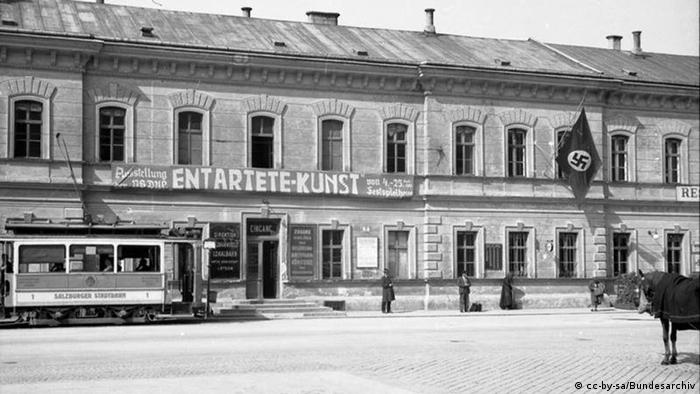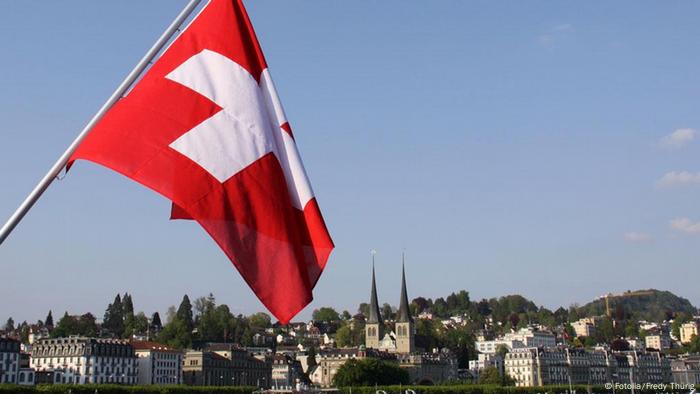At the height of his power, Adolf Hitler had numerous monumental sculptures created to reflect the strength of the Third Reich. Two of them are now on display in Berlin.

Arrival at the Spandau Citadel : A restorer unpacks one of Thorak's horses
The Spandau Citadel in Berlin, an old Renaissance fortress that now houses a museum, also features two monumental Nazi artworks in its exhibition on disused monuments in Berlin. There are two sculptures by the sculptor Josef Thorak. He had made the “Striding Horses” at Adolf Hitler's request for his new Reich Chancellery in Berlin.
Both sculptures need to be restored. One of them has been on display in the permanent exhibition since October 2022, where visitors can observe the restoration process.
At the height of his power in the Third Reich, Hitler had the monumental work of art in the garden of the Reich Chancellery set up – from 1939 to 1944 it remained there. The “Striding Horses” were among the thousands of bronze works made for the Nazi regime. They were later to decorate the “imperial” capital “Germania” – plans for the new city were already ready.
Who was Josef Thorak?
Josef Thorak was born on February 7, 1889 in Vienna. He attended the Vienna Art Academy before going to Berlin in 1915 to complete his art studies. After completing his studies, he established himself as a sculptor specializing in monumental figures and memorials – such as the four-metre-high figure of “Hertha”, which adorns the gable of the former Reichsbank in Gelsenkirchen-Buer.
His style secured him numerous commissions from the German government – he made an international name for himself when he worked with other artists on the Security Monument in Ankara, Turkey in 1934.

Josef Thorak models a portrait of Josef Goebbels
From 1937 onwards Thorak became the house and yard sculptor of the National Socialists and was commissioned to To make tons of propaganda art – to illustrate the (supposed) glory and strength of the Nazi regime with these sculptures.
While the Nazis labeled Jewish and modern art “degenerate,” persecuted the artists, looted Jewish art collections, and forced Jewish dealers to sell their collections at ridiculous prices, artists like Thorak thrived. He finally divorced his Jewish wife and got a prestigious post at the Munich Academy of Fine Arts. After the end of the Second World War he continued unmolested – until his death in 1952.
Why should one exhibit Nazi art?
His “Striding Horses” were long lost. They were rediscovered in 2015 – after a series of spectacular raids against a dubious art dealer ring that operated in secret in Germany. The police seized Thorak's horses, as well as sculptures by Fritz Klimsch and Arno Breker, who were also among Hitler's favorite artists.
The works should be sold on the black market – because Nazi art is taboo on the official art market. Why is this art still exhibited in the citadel? The aim of the museum is to make it clear to what extent different state powers – from the German Empire to the GDR – tried to shape the Berlin cityscape with their monuments between 1849 and 1986.
“Due to the political upheavals in the 20th century, monuments that represented a problematic or even threatening memory or appreciation for the new system were repeatedly removed from public space,” says the website of the citadel. “The museum offers an opportunity to engage with the great symbols of the German Empire, the Weimar Republic, National Socialism and the GDR that should have been buried and forgotten – and now fulfill a new function as testimonies to German history.”
Some people's eyebrows may rise when they hear the keyword “large symbols” – but the museum emphasizes that it would like to develop into a center for research into “toxic” monuments – which are also testimonies to German history. The federal government has also supported the purchase of the “Striding Horses”.
Nazi sculptures in public places
Not too long ago, another exhibition of Nazi art sparked angry protests. Last year, the Munich Pinakothek was berated in an outraged open letter for showing a painting by Nazi artist Adolf Ziegler.
Georg Baselitz, one of the most influential contemporary artists, demanded that the picture be removed. “It's shocking that Nazi propaganda is possible in this dingy way in a Munich museum,” said Baselitz. In addition, it is a “bad” picture. He found it insulting that Ziegler's work should be hung in the same room as the artists he pursued. “Ziegler destroyed art and artists. He doesn't belong in the hall of his victims,” wrote Baselitz, according to the “Süddeutsche Zeitung”.
Many Nazi propaganda sculptures can still be seen in public spaces, such as in the Berlin Olympic Stadium, which was commissioned by the Nazi regime for the 1936 Olympic Games. In the run-up to the 2006 World Cup, where the Olympic Stadium was one of the venues, some activists called for the statues to be removed. However, the city refused on the grounds that removal would constitute a denial of German history.
Adaptation from English: Silke Wünsch.
 “Degenerate Art”: How Hitler and the Nazis defamed art
“Degenerate Art”: How Hitler and the Nazis defamed art “Degenerate Art”: How Hitler and the Nazis defamed art
“Degenerate Art”: How Hitler and the Nazis defamed art “Degenerate Art”: Like Hitler and the Nazis Art defamed
“Degenerate Art”: Like Hitler and the Nazis Art defamed “Degenerate Art”: Like Hitler and the Nazis Art defamed
“Degenerate Art”: Like Hitler and the Nazis Art defamed “Degenerate Art”: How Hitler and the Nazis defamed art
“Degenerate Art”: How Hitler and the Nazis defamed art “Degenerate Art”: How Hitler and the Nazis defamed art
“Degenerate Art”: How Hitler and the Nazis defamed art “Degenerate art”: How Hitler and the Nazis defamed art
“Degenerate art”: How Hitler and the Nazis defamed art “Degenerate Art”: How Hitler and the Nazis defamed art
“Degenerate Art”: How Hitler and the Nazis defamed art “Degenerate Art”: How Hitler and the Nazis defamed art
“Degenerate Art”: How Hitler and the Nazis defamed art “Degenerate Art”: Like Hitler and the Nazis Art defamed
“Degenerate Art”: Like Hitler and the Nazis Art defamed